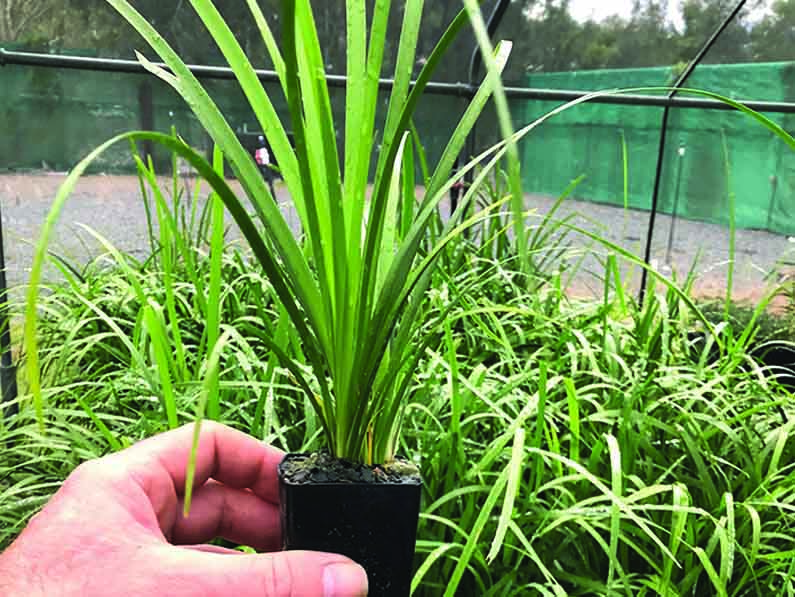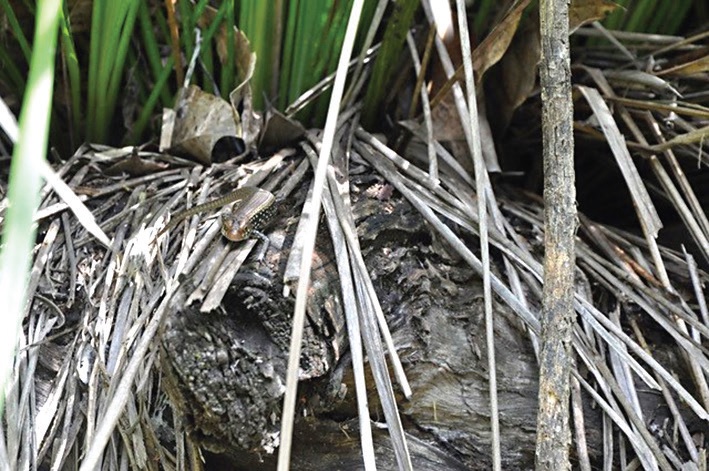Lomandra … it’s a rush!

Author: Saul Hondow, Land for Wildlife Officer, Gold Coast
Published: Journal September 2021
Ok I’m just going to throw it out there and confess “I love lomandra”. From their bold strapping leaves to their upright tufted habit and sweet-scented flowers, these plants make my blood rush to the point where my partner now cringes when asking “what should we plant here” … but seriously folks… let’s look at lomandra.
Ten species of lomandra, commonly known as Mat Rush, are naturally found in SEQ. They are often referred to as a ‘large grass’ however their family is Laxmanniaceae and the true grass family is Poaceae.
Naturally, the ten species are found across a range of ecosystems including heathlands, wetlands, waterways, rainforest, eucalypt forest and montane rock faces. In fact, there’s not many plant communities where they are not found.
In urban and city environments, they are planted everywhere, from roadsides and roundabouts, to parks and sporting fields. Lomandra is one of the most widely used native plants across our landscape. Why you ask? Primarily it’s because they are incredibly hardy in our harsh environment, but it goes much further than that!
They are tolerant to drought and frost, grow in most soil types, handle vehicle pollutants, many are fire retardant and others survive major flood events, for example Lomandra hystrix is well known for dissipating water flow during peak flows. When established in mass, their fibrous root systems intertwine forming ‘mat like’ structures that effectively stabilise topsoil. After multiple recent cyclone events a number of Land for Wildlife members that manage riparian areas mentioned that, “the weeds just washed away but lomandra remained”. For landscaping steep slopes with minimal ongoing maintenance, lomandras are perfect.
Traditional use of lomandra by Indigenous communities is vast. It was used to make baskets, dilly bags, nets, fish and eel traps, mats, food containers and other implements.
The long tough leaves were split, bundled, soaked and drawn through hot ashes to allow the fibres to become suitable for weaving. Leaf fibres were used to make string for armbands and necklaces. Medicinally, the leaves were sometimes used as bandages and the root of some lomandra species were used for the treatment of bite and stings. The sweetly scented flowers are edible. Fruit is also edible but they are tough and need to be ground to meal first. The base of the leaf is a little bit fleshy and can be eaten. It is said to be refreshing, tasting both nutty or like fresh green peas. I tested this on my lomandras and can confirm whilst it was refreshing, it wasn’t quite like the sugar snaps in my garden.

Major Skink Egernia frerei basking on the fallen leaves at the base of a lomandra plant
In regard to habitat value, lomandras play a vital role for insects and this in turn, benefits birds, frogs and other animals that feed on insects. Flowers are pollinated by beetles and the nectar harvest is well sought after by bees, whilst ants harvest and distribute seeds. Importantly, leaves are also food for the larvae of numerous skipper butterflies.
The tufted structure of the larger lomandra species provides shelter and protection for many small animals including snakes, skinks, and smaller mammals including pademelons and rodents. It is well documented that Indigenous people also considered them a great place to hunt!
At home I’m always excited to hear the rustling of critters as I brush through my lomandras. When I sit quietly, it never ceases to amaze me how much activity and diversity lays within. One of my favourites is a family of Major Skinks that bask in the sunshine on the outer edges of lomandra and, with the slightest of movement, will retreat to shelter in the blink of an eye.
So if you need a low maintenance, stabilising plant that will provide great habitat for our local critters consider lomandras.
If you would like to grow your own, follow the easy steps on this post as most species propagate readily from seed. Ideally, collect your seed from a number of different plants in the wild (rather than planted ones) and ensure you have permission for seed collection.
References
Mangroves to Mountains – Glenn Leiper, Jan Glazebrook, Denis Cox, Kerry Rathie
Bush Tucker Boomerangs & Bandages – Michelle McKerney & Harry White
Medicinal Plants in Australia Volume 1 – Cheryl Williams
